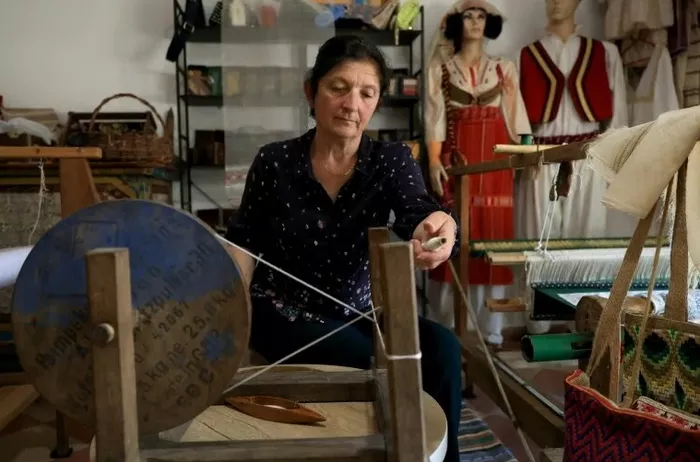Albanian women have long been celebrated for their vibrant and elegant traditional attire, with some styles worn until relatively recently. Among the most stylish were the women of Zadrima, whose wardrobes included handmade silks, headdresses, and gauze blouses paired with ornate belts and rich red silk. This centuries-old artistry was nearly lost, but a group of determined local women is now bringing it back, mastering every stage of silk production—from raising silkworms to weaving the fabric.
Ethnologist Aferdita Onuzi explained that the silk-making history in the Zadrima region, nestled between Albania’s northern mountains and the Adriatic Sea, dates back to the 10th century. At one time, the silk from this region was so prized that it was exported and adored by the French and Italian nobility. However, under Albania’s postwar communist regime, all silk production was centralized in a single state-run factory. When communism collapsed in the early 1990s, the factory was destroyed, and the tradition fell into decline amid mass emigration and the rise of synthetic fabrics.
For the past 15 years, women like Franceska Pjetraj and her family have taken it upon themselves to revive the craft in their native region. At 30 years old, Franceska runs a silk workshop with her mother, Mimoza, a 54-year-old nurse. Together, they have brought silk back to life in Zadrima, honoring its deep roots while pursuing brighter futures for themselves and their community. Franceska describes silk making as integral to local heritage, recalling how silk garments were once a major source of pride and joy for women in the area.
Every part of their process is done by hand, with care and precision. The white mulberry trees that flourish in Zadrima provide ideal nourishment for silkworms. Franceska tends to the worms in a dark barn, nurturing them like infants with warmth and patience. She notes how sensitive the creatures are—vulnerable to shifts in temperature, noise, humidity, and even thunderstorms.
The worms, once they begin weaving their cocoons, are harvested before becoming butterflies. The cocoons are softened in boiling water, brushed gently to find the start of the thread, and then drawn out to be woven into fabric. The entire process, as Mimoza puts it, is a form of art requiring skill, patience, and a deep passion.
Last year, the mother-daughter duo produced 10 kilograms (22 pounds) of silk thread, which they turned into elegant stoles, blouses, and skirts. Demand for their products remains steady, thanks to their attention to quality and fair pricing. Inspired by their success, hundreds of women in Zadrima and neighboring regions have joined the effort, raising silkworms and weaving by hand.
One of those new artisans is 18-year-old Rozana Gostorani, who dreams of seeing Zadrima silk on international fashion runways. With pride in her voice, she hopes that luxury brands like Versace or Dolce & Gabbana will take notice of the ancient craftsmanship being revived in Albania. For her, this isn’t just tradition—it’s a form of high art with global potential.
Related Topics

